OUR VISION



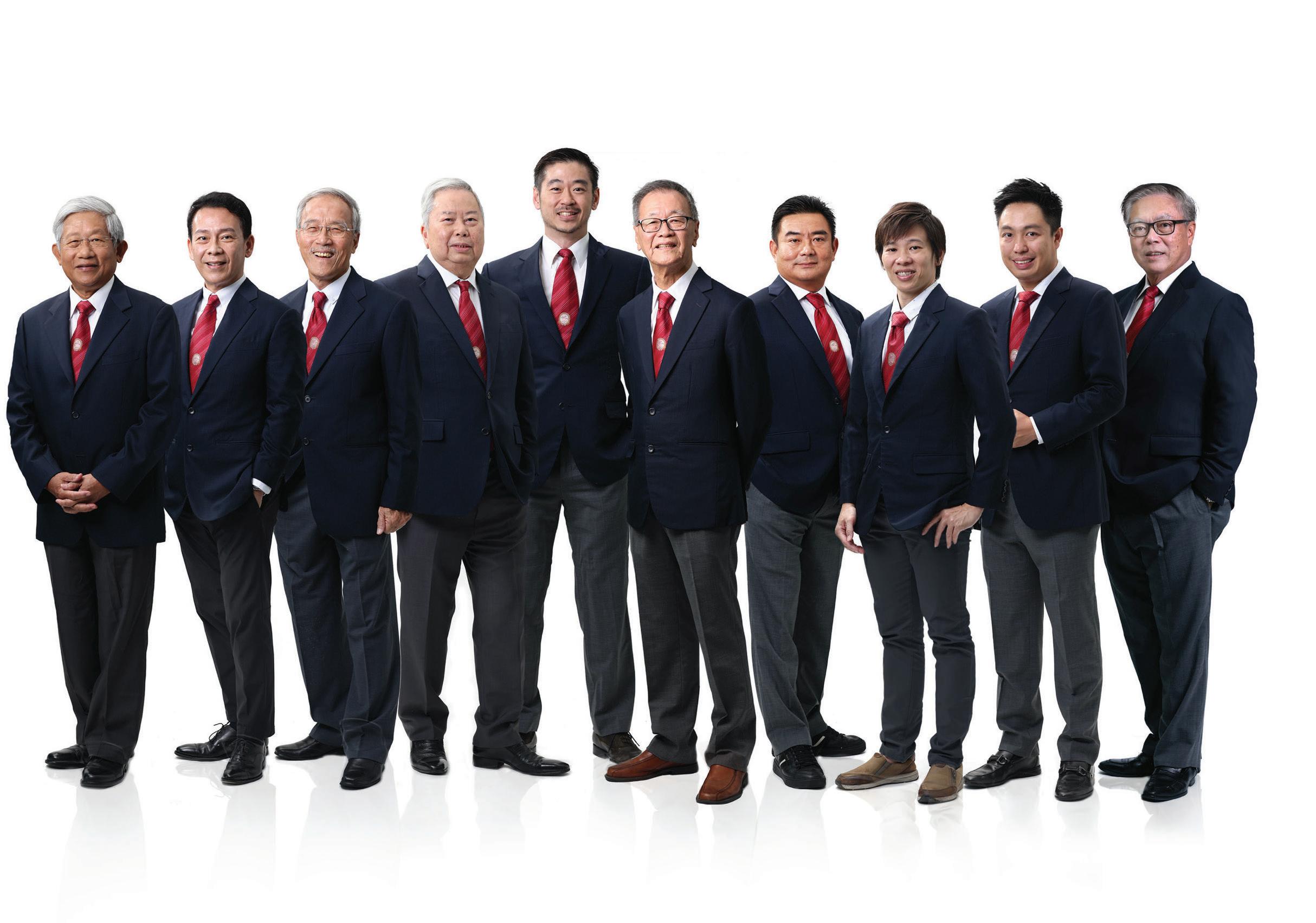
























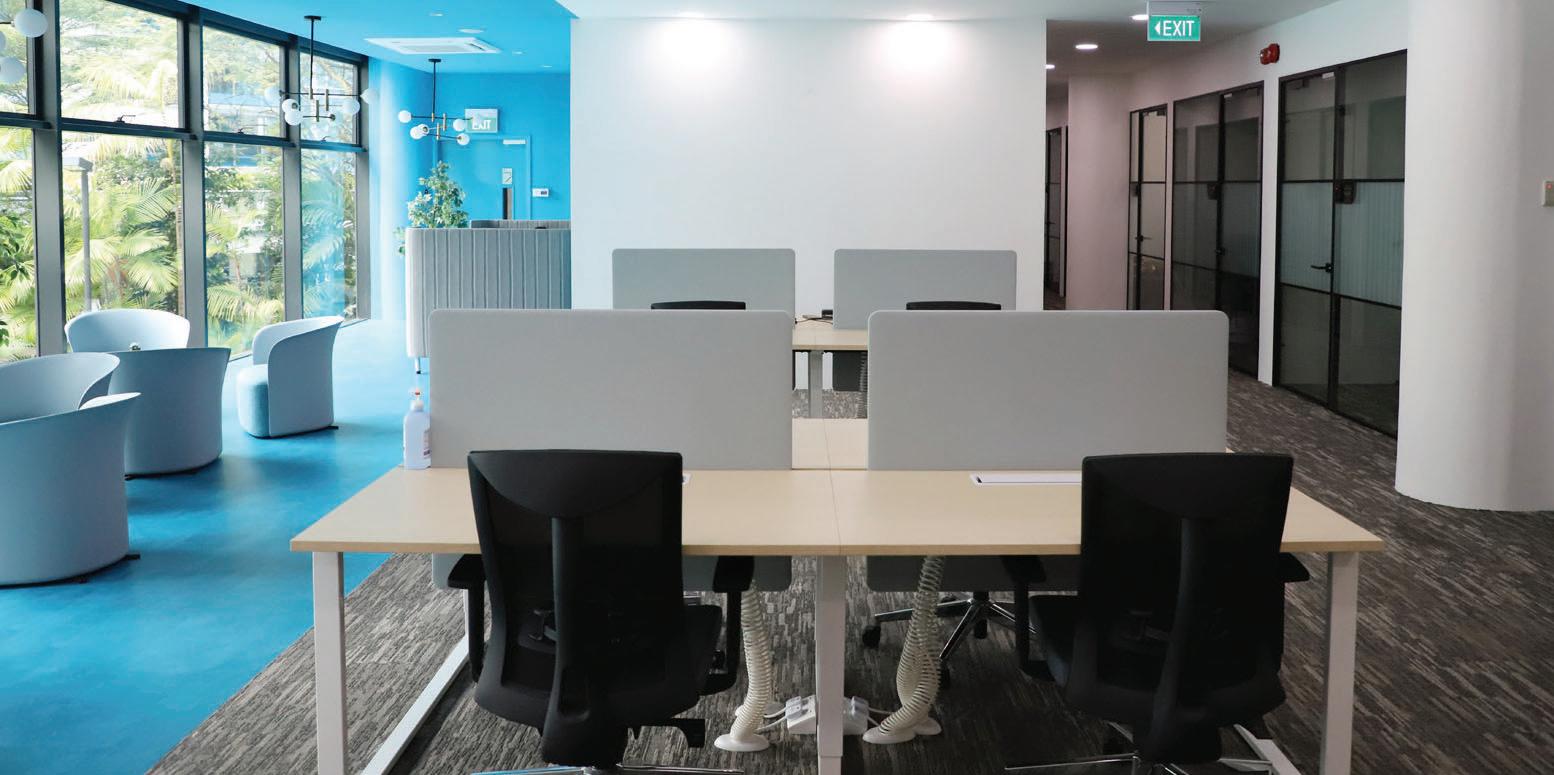


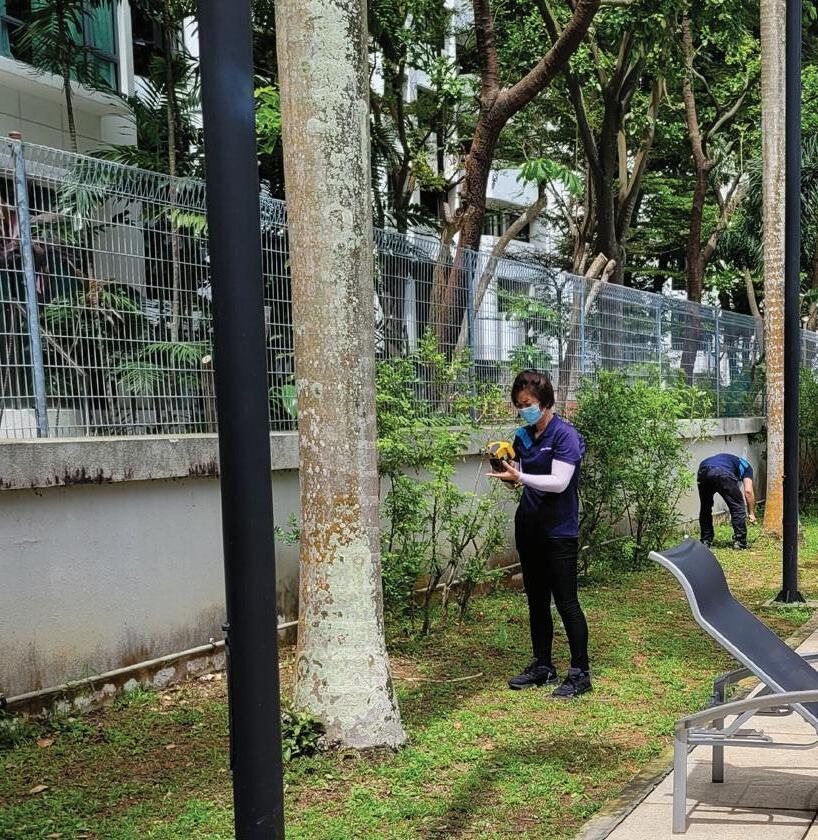
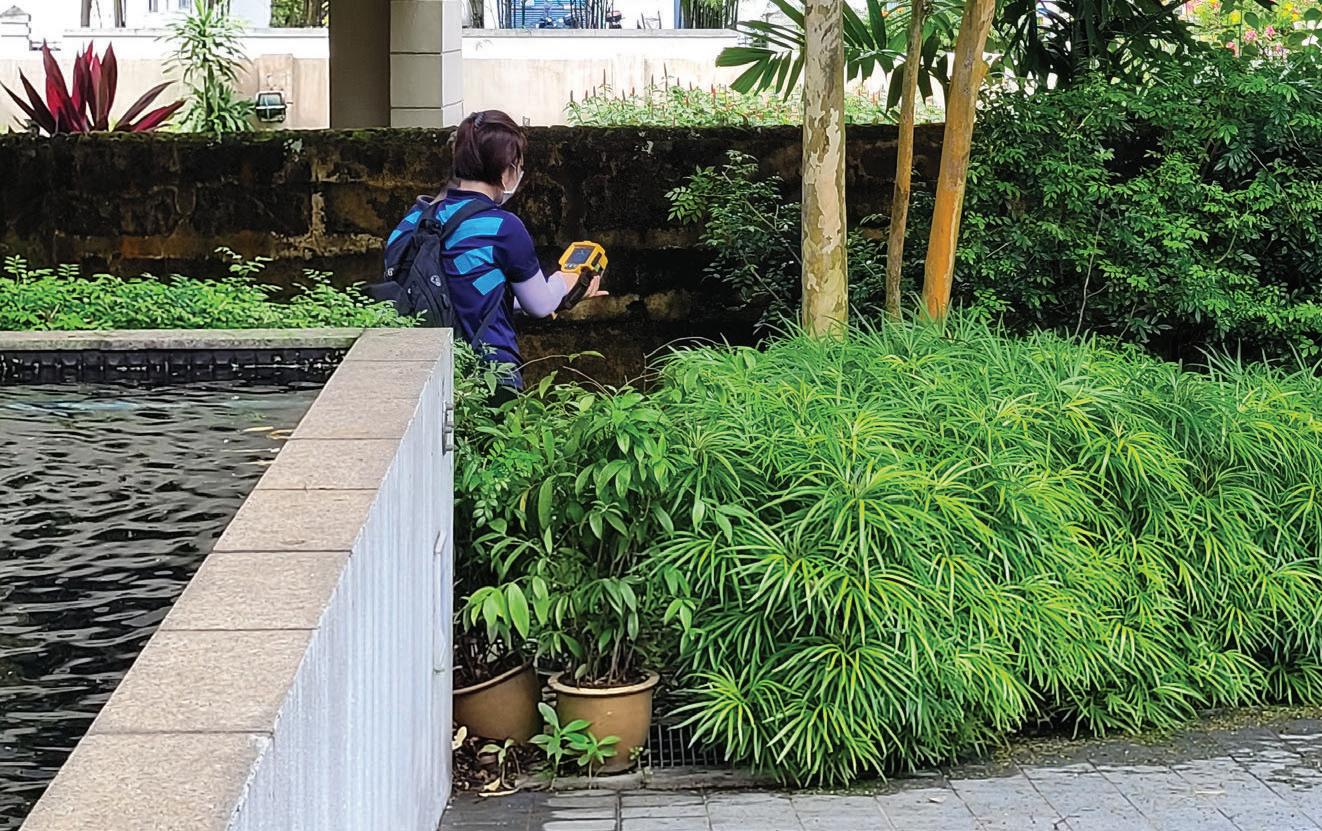





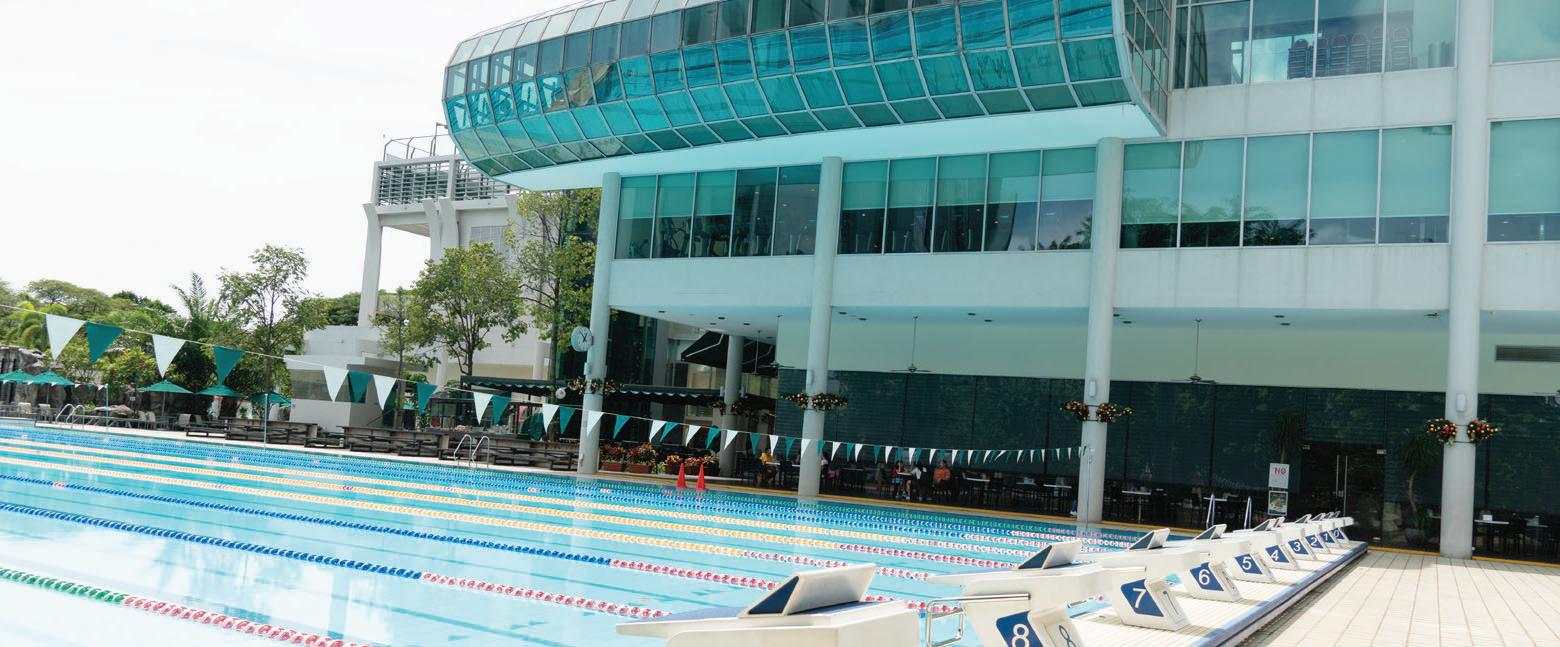








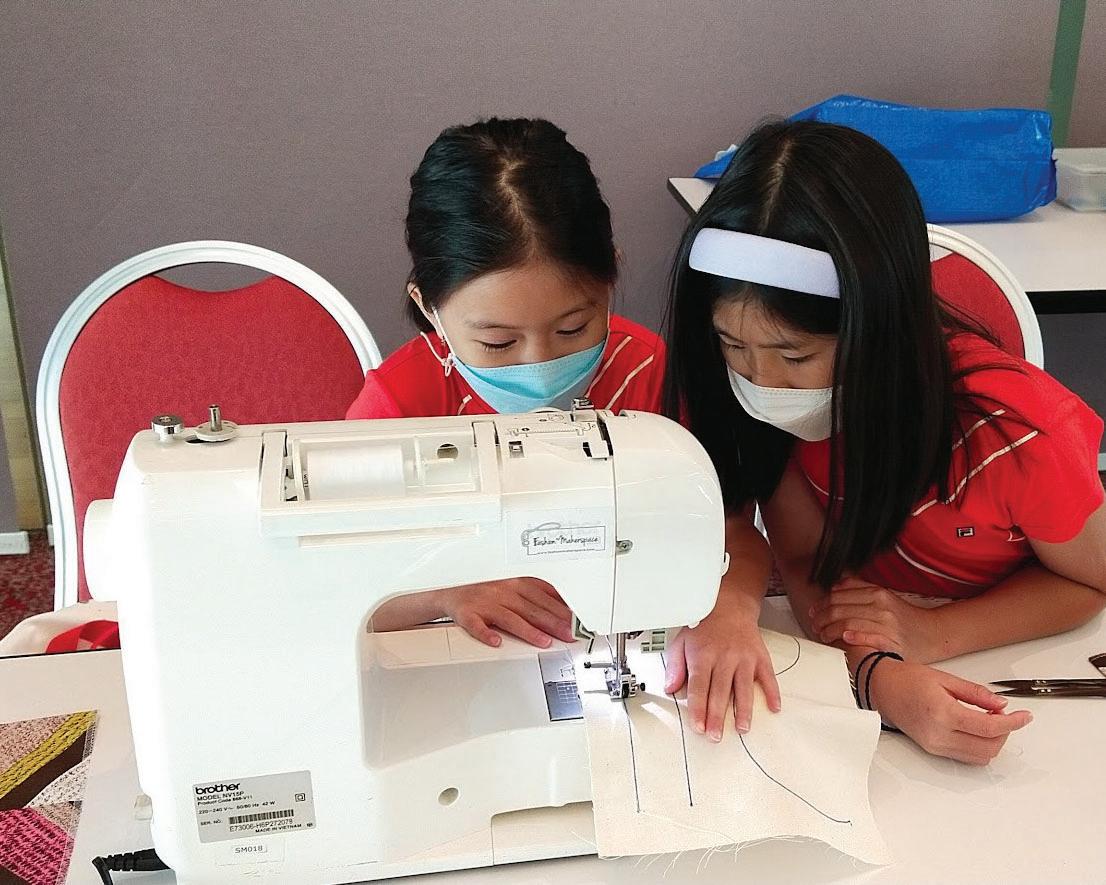
















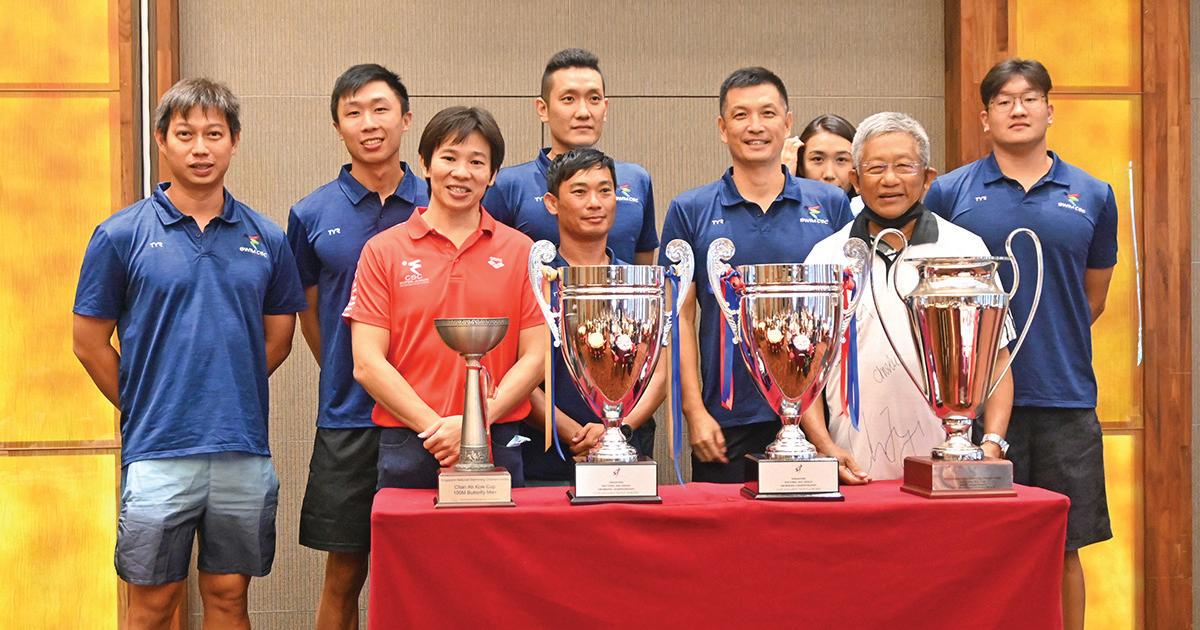
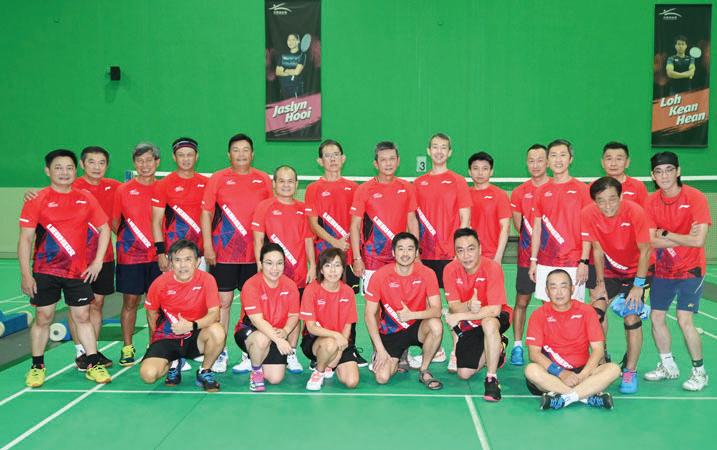


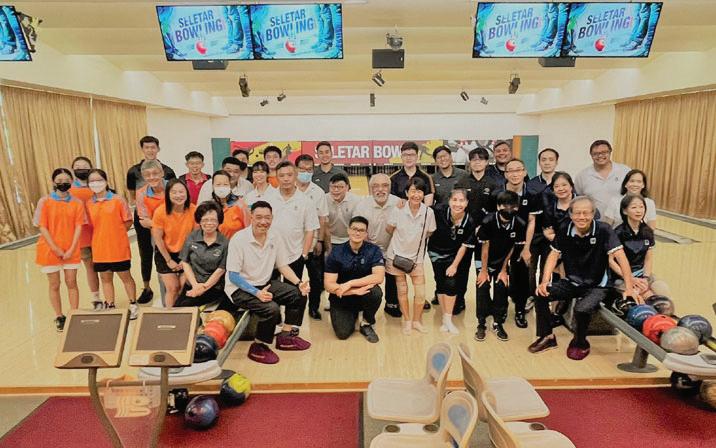



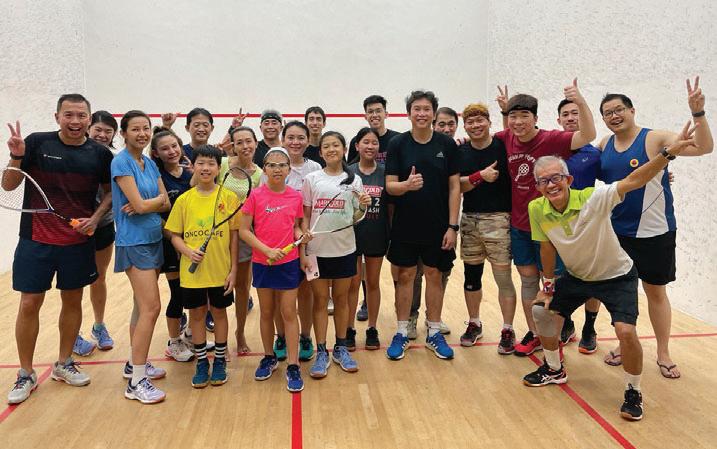







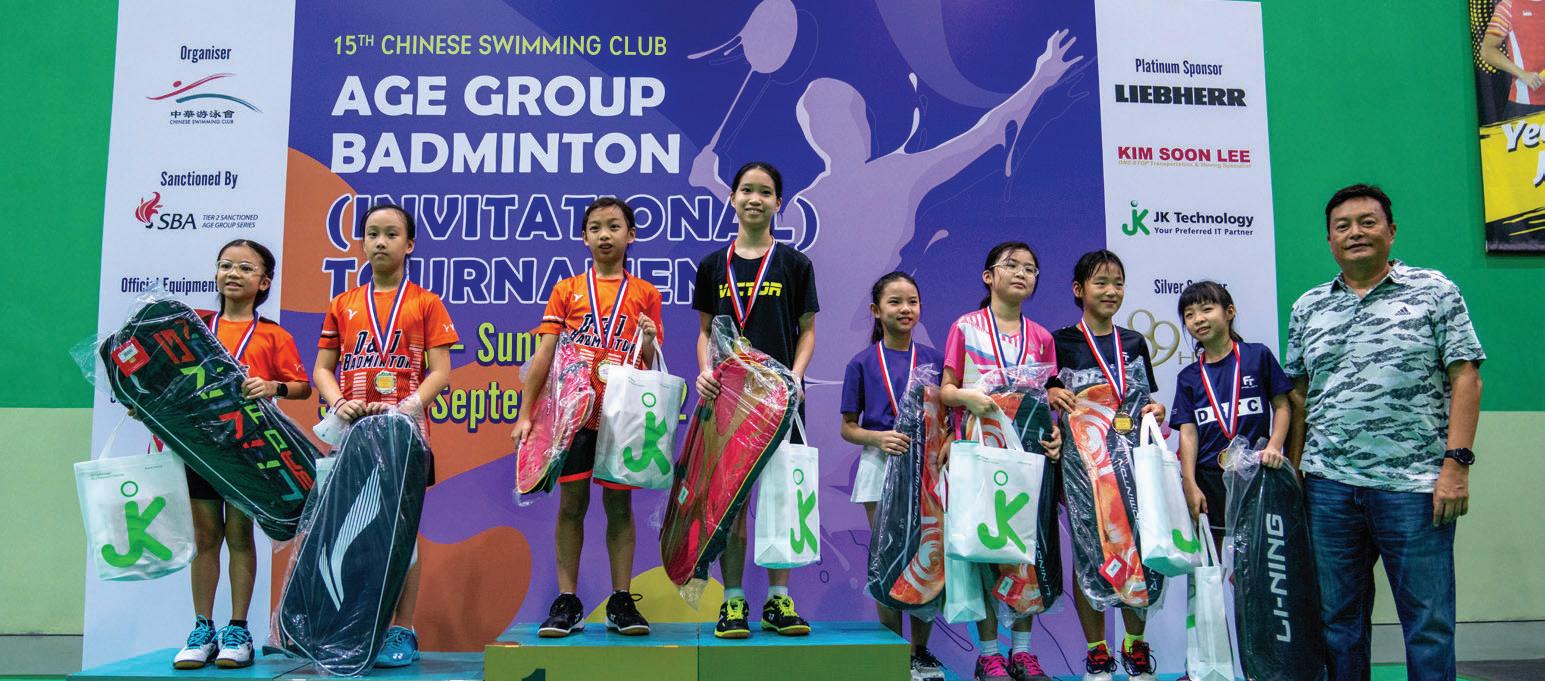





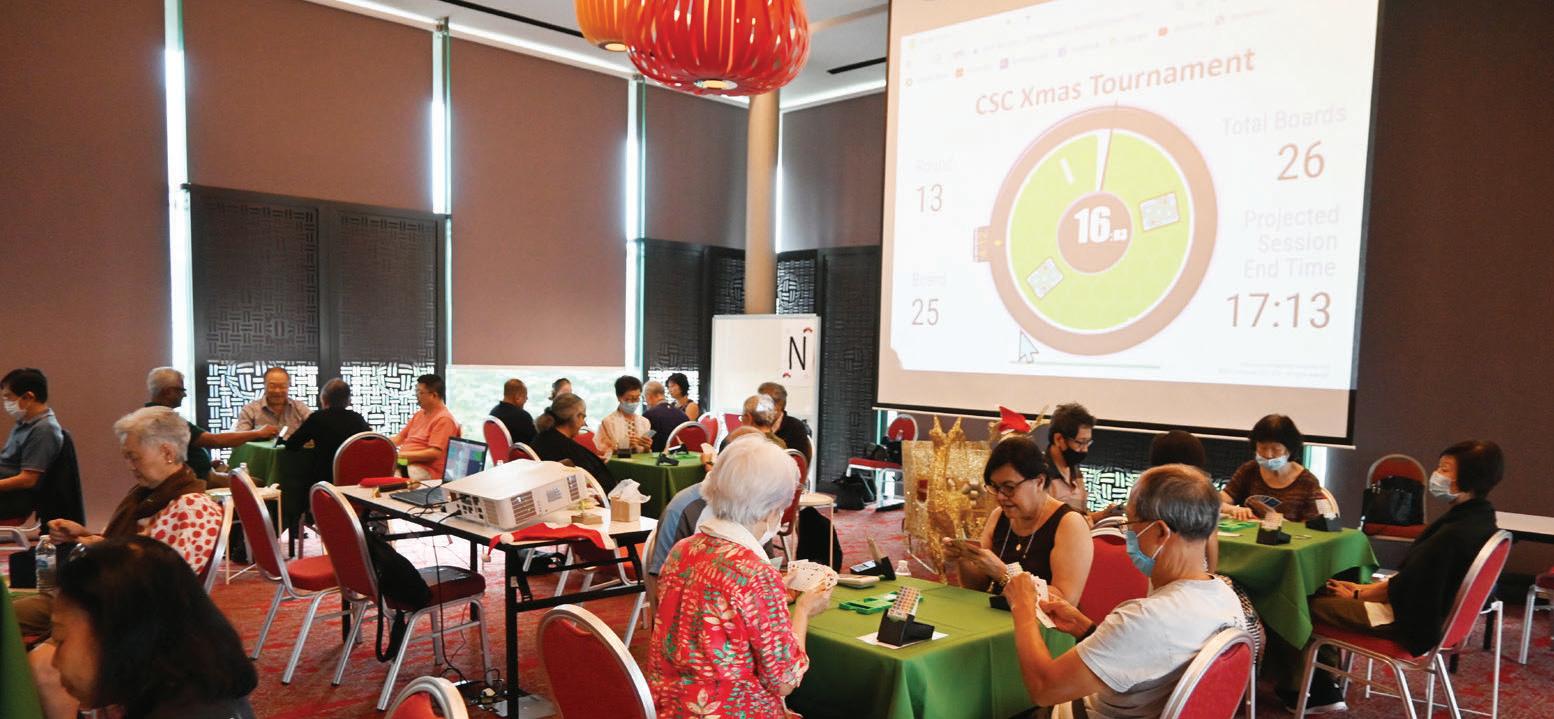










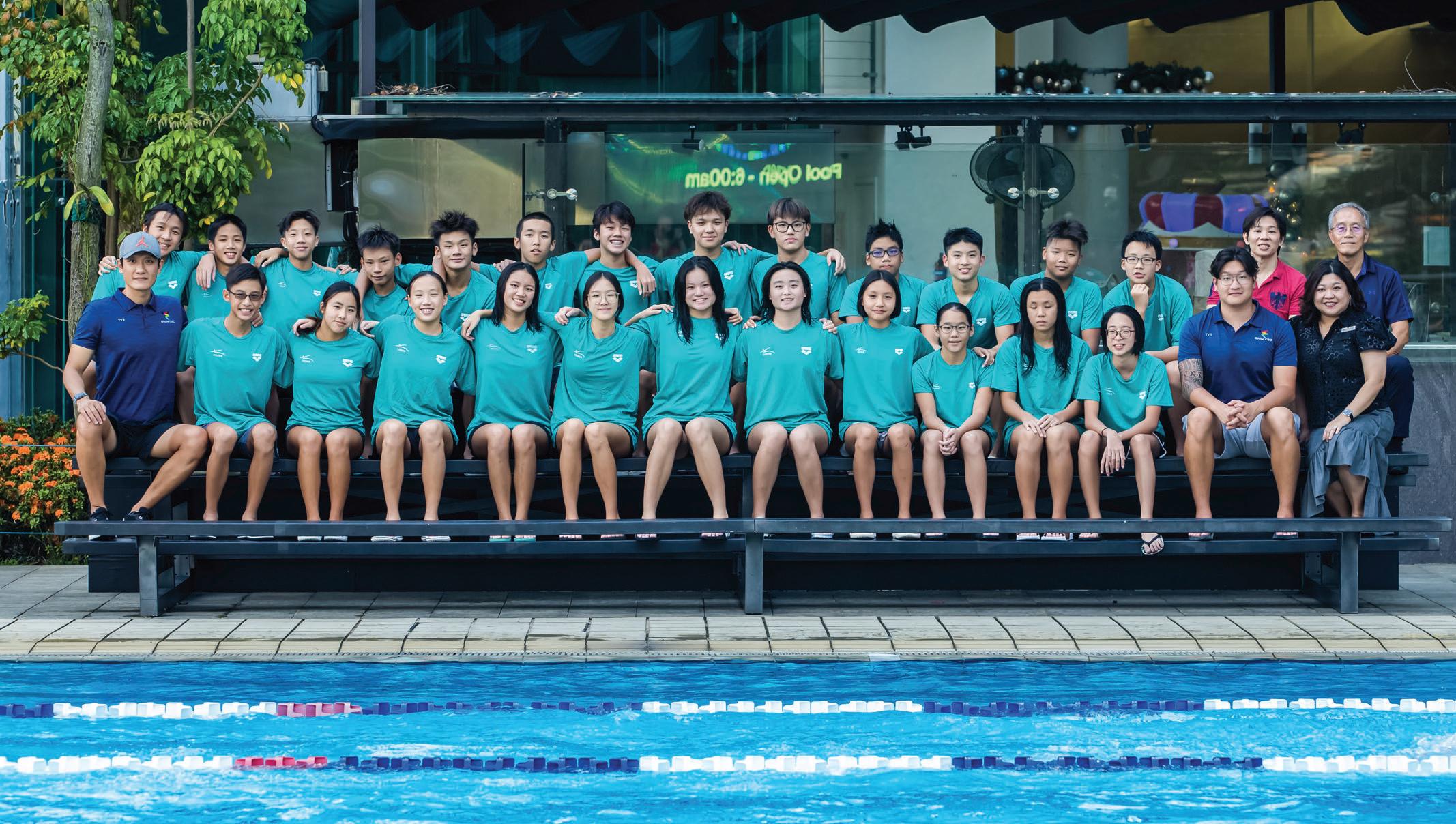



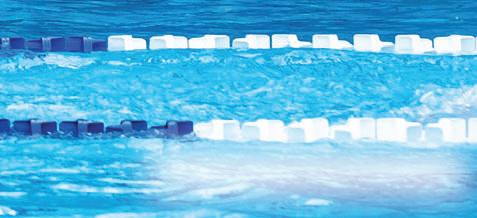








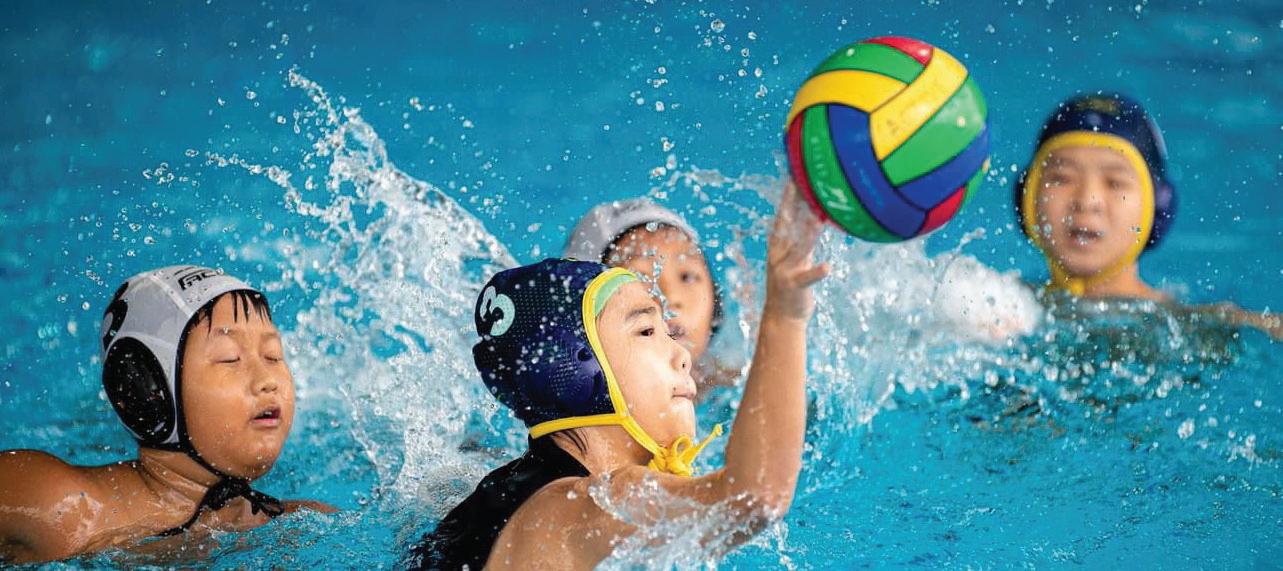
































































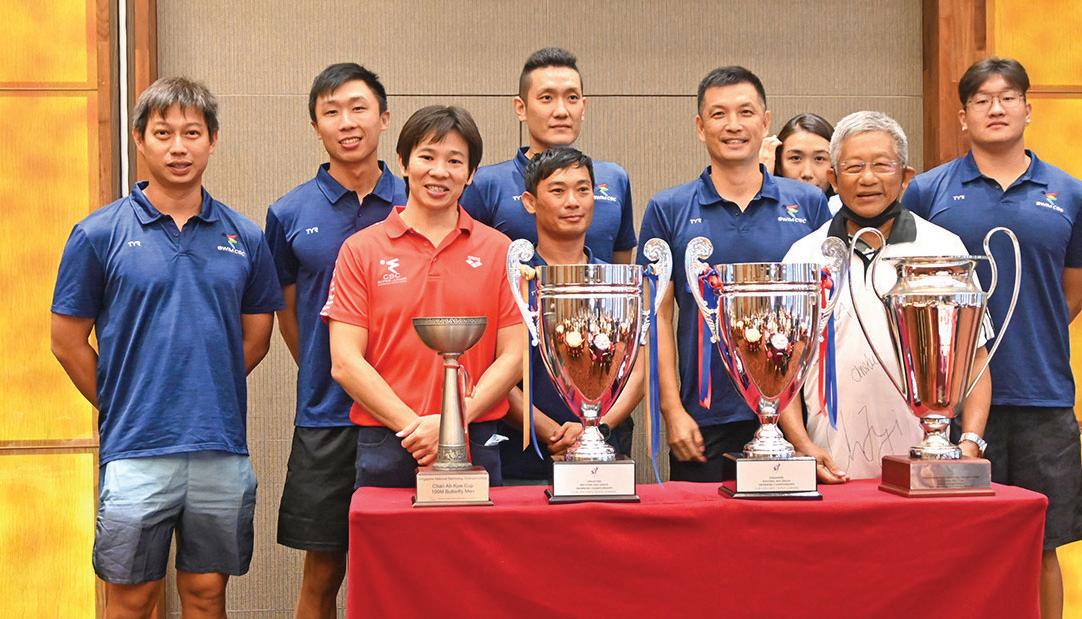





















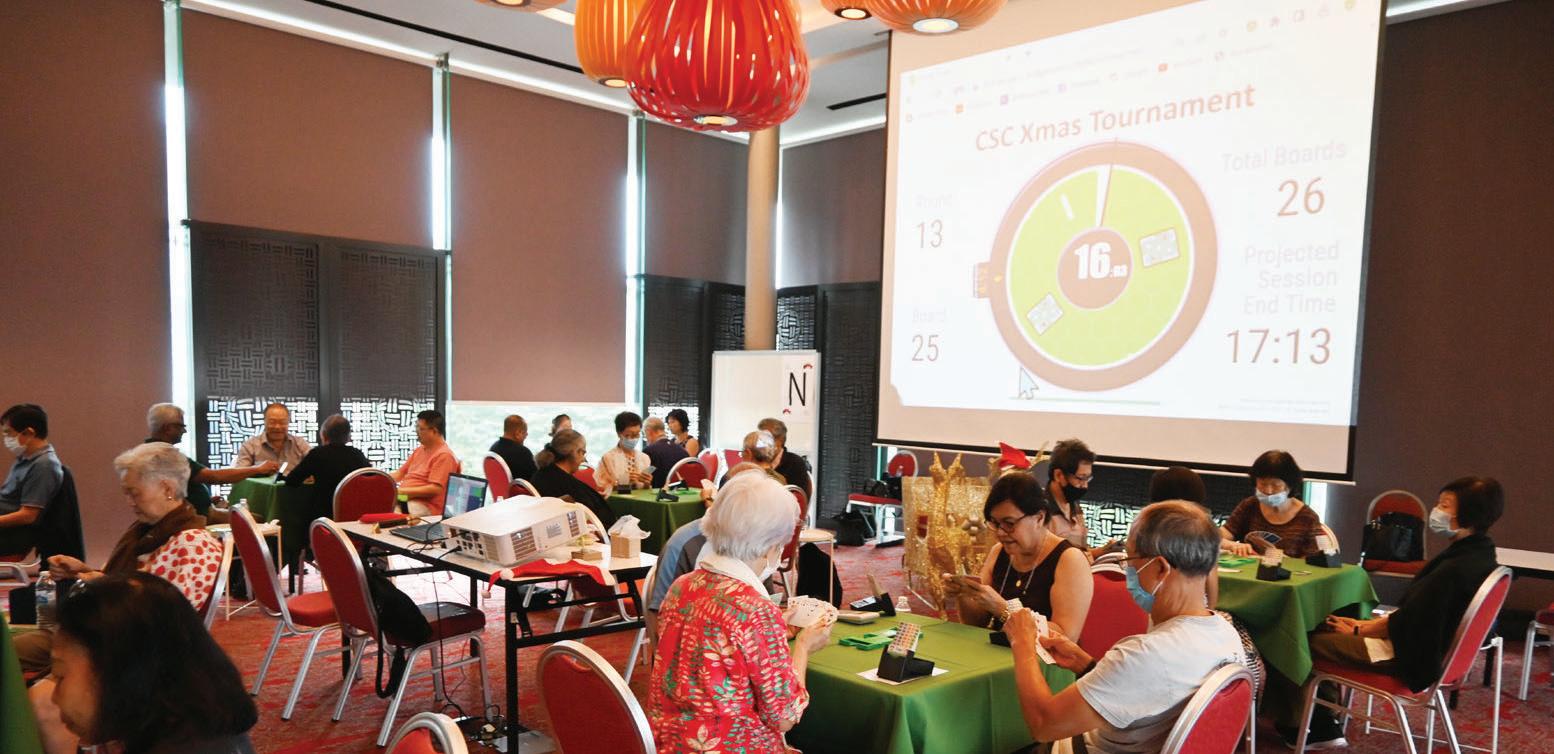




















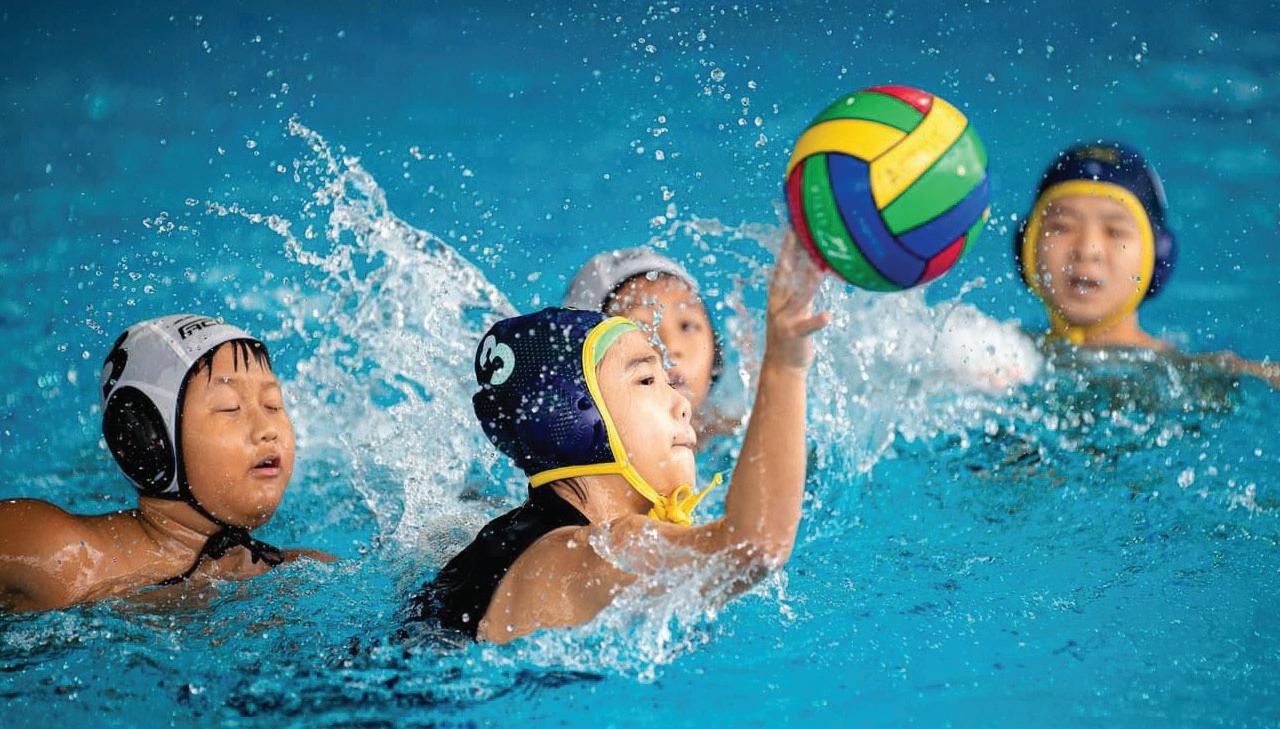



CHINESE SWIMMING CLUB
Year-on-Year (YoY) Analysis For The Year Ended 31 December 2022
CHINESE SWIMMING CLUB
Actual vs Forecast For The Year Ended 31 December 2022
CHINESE SWIMMING CLUB
Proposed Budget of 2023/Actual & Forecast of 2022
CHINESE SWIMMING CLUB
Statement by the Management Committee for the financial year ended 31 December 2022
On behalf of the Management Committee of the Chinese Swimming Club (the “Club”), we, Victor Chia and Jonathan Kuah, being the Club’s President and Vice-President (Finance), respectively, do hereby state that in our opinion, the financial statements of the Club are properly drawn up in accordance with the provisions of the Singapore Societies Act (the “Act”) and Singapore Financial Reporting Standards so as to present fairly, in all material respects, the financial position of the Club as at 31 December 2022 and of the financial performance, changes in funds and cash flows of the Club for the financial year then ended.
On behalf of the Management Committee
Victor Chia President Jonathan Kuah Vice-President (Finance)03 April 2023

INDEPENDENT AUDITOR’S REPORT
TO THE MEMBERS OF CHINESE SWIMMING CLUB FOR THE FINANCIAL YEAR ENDED 31 DECEMBER 2022
(Registered under the Singapore Societies Act Chapter 311)
Report on the Audit of the Financial Statements
Opinion
We have audited the financial statements of Chinese Swimming Club (the “Club”), which comprise the statement of financial position as at 31 December 2022, and the statement of profit or loss and other comprehensive income, statement of changes in funds and statement of cash flows for the financial year then ended, and notes to the financial statements, including a summary of significant accounting policies.
In our opinion, the accompanying financial statements are properly drawn up in accordance with the provisions of the Societies Act (the “Act”) and Financial Reporting Standards in Singapore (FRSs) so as to present fairly, in all material respects, the financial position of the Club as at 31 December 2022 and the financial performance, changes in funds and cash flows of the Club for the financial year ended on that date.
Basis for Opinion
We conducted our audit in accordance with Singapore Standards on Auditing (SSAs). Our responsibilities under those standards are further described in the Auditor’s Responsibilities for the Audit of the Financial Statements section of our report. We are independent of the Club in accordance with the Accounting and Corporate Regulatory Authority (ACRA) Code of Professional Conduct and Ethics for Public Accountants and Accounting Entities (ACRA Code) together with the ethical requirements that are relevant to our audit of the financial statements in Singapore, and we have fulfilled our other ethical responsibilities in accordance with these requirements and the ACRA Code. We believe that the audit evidence we have obtained is sufficient and appropriate to provide a basis for our opinion.
Other Information
Management is responsible for the other information. The other information obtained at the date of this auditor’s report is the Statement by the Management Committee included in the Annual Report, but does not include the financial statements and our auditor’s report thereon.
Our opinion on the financial statements does not cover the other information and we do not express any form of assurance conclusion thereon.
In connection with our audit of the financial statements, our responsibility is to read the other information and, in doing so, consider whether the other information is materially inconsistent with the financial statements or our knowledge obtained in the audit or otherwise appears to be materially misstated. If, based on the work we have performed on the other information obtained prior to the date of this auditor’s report, we conclude that there is a material misstatement of this other information, we are required to report that fact. We have nothing to report in this regard.
INDEPENDENT AUDITOR’S REPORT
TO THE MEMBERS OF CHINESE SWIMMING CLUB FOR THE FINANCIAL YEAR ENDED 31 DECEMBER 2022 (CONT’D)
(Registered under the Singapore Societies Act Chapter 311)
Responsibilities of Management and Management Committee for the Financial Statements
Management is responsible for the preparation and fair presentation of the financial statements in accordance with the provisions of the Act and FRSs, and for such internal control as management determines is necessary to enable the preparation of financial statements that are free from material misstatement, whether due to fraud or error.
In preparing the financial statements, management is responsible for assessing the Club’s ability to continue as a going concern, disclosing, as applicable, matters related to going concern and using the going concern basis of accounting unless management either intends to liquidate the Club or to cease operations, or has no realistic alternative but to do so.
The Management Committee’s responsibilities include overseeing the Club’s financial reporting process.
Auditor’s Responsibilities for the Audit of the Financial Statements
Our objectives are to obtain reasonable assurance about whether the financial statements as a whole are free from material misstatement, whether due to fraud or error, and to issue an auditor’s report that includes our opinion. Reasonable assurance is a high level of assurance, but is not a guarantee that an audit conducted in accordance with SSAs will always detect a material misstatement when it exists. Misstatements can arise from fraud or error and are considered material if, individually or in the aggregate, they could reasonably be expected to influence the economic decisions of users taken on the basis of these financial statements.
As part of an audit in accordance with SSAs, we exercise professional judgement and maintain professional skepticism throughout the audit. We also:
Identify and assess the risks of material misstatement of the financial statements, whether due to fraud or error, design and perform audit procedures responsive to those risks, and obtain audit evidence that is sufficient and appropriate to provide a basis for our opinion. The risk of not detecting a material misstatement resulting from fraud is higher than for one resulting from error, as fraud may involve collusion, forgery, intentional omissions, misrepresentations, or the override of internal control.
Obtain an understanding of internal control relevant to the audit in order to design audit procedures that are appropriate in the circumstances, but not for the purpose of expressing an opinion on the effectiveness of the Club’s internal control.
Evaluate the appropriateness of accounting policies used and the reasonableness of accounting estimates and related disclosures made by management.
INDEPENDENT AUDITOR’S REPORT
TO THE MEMBERS OF CHINESE SWIMMING CLUB FOR THE FINANCIAL YEAR ENDED 31 DECEMBER 2022 (CONT’D)
(Registered under the Singapore Societies Act Chapter 311)

Auditor’s Responsibilities for the Audit of the Financial Statements (Cont’d)
Conclude on the appropriateness of management’s use of the going concern basis of accounting and, based on the audit evidence obtained, whether a material uncertainty exists related to events or conditions that may cast significant doubt on the Club’s ability to continue as a going concern. If we conclude that a material uncertainty exists, we are required to draw attention in our auditor’s report to the related disclosures in the financial statements or, if such disclosures are inadequate, to modify our opinion. Our conclusions are based on the audit evidence obtained up to the date of our auditor’s report. However, future events or conditions may cause the Club to cease to continue as a going concern.
Evaluate the overall presentation, structure and content of the financial statements, including the disclosures, and whether the financial statements represent the underlying transactions and events in a manner that achieves fair presentation.
We communicate with the Management Committee regarding, among other matters, the planned scope and timing of the audit and significant audit findings, including any significant deficiencies in internal control that we identify during our audit.
Report on Other Legal and Regulatory Requirements
In our opinion, the accounting and other records required by the Societies Regulations enacted under the Act to be kept by the Club have been properly kept in accordance with those regulations.
3 April 2023
CHINESE SWIMMING CLUB
CHINESE SWIMMING CLUB
STATEMENT OF PROFIT OR LOSS AND OTHER COMPREHENSIVE INCOME FOR THE FINANCIAL YEAR ENDED 31 DECEMBER 2022
CHINESE SWIMMING CLUB
STATEMENT OF CHANGES IN FUNDS FOR THE FINANCIAL YEAR ENDED 31 DECEMBER 2022
CHINESE SWIMMING CLUB
STATEMENT OF CASH FLOWS FOR THE FINANCIAL YEAR ENDED 31 DECEMBER 2022
CHINESE SWIMMING CLUB
STATEMENT OF CASH FLOWS (CONT’D) FOR THE FINANCIAL YEAR ENDED 31 DECEMBER 2022
Note A:
During the financial year, the Club acquired property, plant and equipment with aggregate costs of $591,324 (2021: $358,796), of which $516,648 (2021: $357,296) were acquired by cash payments, $73,876 (2021: $Nil) were acquired by finance lease and a trade-in of $800 (2021: $1,500) from disposal of property plant and equipment.
CHINESE SWIMMING CLUB
NOTES TO THE FINANCIAL STATEMENTS FOR THE FINANCIAL YEAR ENDED 31 DECEMBER 2022
These notes form an integral part of and should be read in conjunction with the accompanying financial statements.
1. GENERAL
Chinese Swimming Club (the “Club”) is registered in Singapore under the Singapore Societies Act. It is domiciled in Singapore and its place of business and registered office is at 21 & 34 Amber Road, Singapore 439870.
The principal activities of the Club are to encourage swimming and allied activities, to promote physical culture and to provide facilities for socio-cultural activities and healthy recreation.
The financial statements for the financial year ended 31 December 2022 were authorised for issue by the Management Committee on 3 April 2023.
2. SUMMARY OF SIGNIFICANT ACCOUNTING POLICIES
(a) Basis of preparation
These financial statements have been prepared in accordance with Singapore Financial Reporting Standards (“FRS”) under the historical cost basis, except as disclosed in the accounting policies below.
The preparation of financial statements in conformity with FRS requires management to exercise its judgement in the process of applying the Club’s accounting policies. It also requires the use of certain critical accounting estimates and assumptions. The areas involving a higher degree of judgement or complexity, or areas where assumptions and estimates are significant to the financial statements, are disclosed in Note 3.
Adoption of new and revised standards and interpretations
The accounting policies adopted are consistent with those of the previous financial year except in the current financial year, the Club has adopted all the new and revised standards which are relevant to the Club and are effective for annual financial periods beginning on or after 1 January 2022. The adoption of these standards did not have any material effect on the financial statements of the Club.
CHINESE SWIMMING CLUB
NOTES TO THE FINANCIAL STATEMENTS FOR THE FINANCIAL YEAR ENDED 31 DECEMBER 2022
2. SUMMARY OF SIGNIFICANT ACCOUNTING POLICIES (CONT’D)
(a) Basis of preparation (Cont’d) Standards issued but not yet effective
The Club has not adopted the following standards applicable to the Club that have been issued but not yet effective:
The Management Committee expects that the adoption of the standards above will have no material impact on the financial statements in the year of initial application.
CHINESE SWIMMING CLUB
NOTES TO THE FINANCIAL STATEMENTS FOR THE FINANCIAL YEAR ENDED 31 DECEMBER 2022
2. SUMMARY OF SIGNIFICANT ACCOUNTING POLICIES (CONT’D)
(b) Cash and cash equivalents
For the purpose of presentation in the statement of cash flows, cash and cash equivalents include cash and bank balances, and fixed deposits placed with financial institutions which are subject to an insignificant risk of change in value less fixed deposits with maturity date of more than 3 months from placement date.
(c) Financial instruments
Financial assets
Initial recognition and measurement
Financial assets are recognised when, the Club becomes party to the contractual provisions of the instruments.
At initial recognition, the Club measures a financial asset at its fair value plus, in the case of a financial asset not at FVPL, transaction costs that are directly attributable to the acquisition of the financial asset. Transaction costs of financial assets carried at FVPL are expensed in profit or loss.
Trade receivables are measured at the amount of consideration to which the Club expects to be entitled in exchange for transferring promised goods or services to a customer, excluding amounts collected on behalf of third party, if the trade receivables do not contain a significant financing component at initial recognition.
Subsequent measurement
Investments in debt instruments
Subsequent measurement of debt instruments depends on the Club’s business model for managing the asset and the contractual cash flow characteristics of the asset. The three measurement categories for classification of debt instruments are amortised cost, FVOCI and FVPL. The Club has debt instruments at amortised cost and FVOCI.
(i) Debt instrument at amortised cost
Financial assets that are held for the collection of contractual cash flows where those cash flows represent solely payments of principal and interest are measured at amortised cost. Financial assets are measured at amortised cost using the effective interest method, less impairment. Gains and losses are recognised in profit or loss when the assets are derecognised or impaired, and through the amortisation process.
CHINESE SWIMMING CLUB
NOTES TO THE FINANCIAL STATEMENTS FOR THE FINANCIAL YEAR ENDED 31 DECEMBER 2022
2. SUMMARY OF SIGNIFICANT ACCOUNTING POLICIES (CONT’D)
(c) Financial instruments (Cont’d)
Financial assets (Cont’d)
Subsequent measurement (Cont’d)
Investments in debt instruments (Cont’d)
(i) Debt instrument at fair value through other comprehensive income (FVOCI)
Financial assets that are held for the collection of contractual cash flows and for selling the financial assets, where the assets’ cash flows represent solely payments of principal and interest are measured at FVOCI. Financial assets are measured at FVOCI are subsequently measured at fair value. Any gain or losses from changes in fair value of the financial assets are recognised in other comprehensive income, except for impairment losses, foreign exchange gains and losses and interest calculated using the effective interest method are recognised in profit and loss. The cumulative gain or loss previously recognised in other comprehensive income is reclassified from equity to profit or loss as a reclassification adjustment when the financial asset is derecognised.
Derecognition
A financial asset is derecognised where the contractual right to receive cash flows from the asset has expired. On derecognition of a financial asset in its entirety, the difference between the carrying amount and the sum of the consideration received and any cumulative gain or loss that had been recognised in other comprehensive income for debt instruments is recognised in profit or loss.
CHINESE SWIMMING CLUB
NOTES TO THE FINANCIAL STATEMENTS FOR THE FINANCIAL YEAR ENDED 31 DECEMBER 2022
2. SUMMARY OF SIGNIFICANT ACCOUNTING POLICIES (CONT’D)
(c) Financial instruments (Cont’d)
Financial liabilities
Initial recognition and measurement
Financial liabilities are recognised when, the Club becomes a party to the contractual provisions of the financial instrument. The Club determines the classification of its financial liabilities at initial recognition.
All financial liabilities are recognised initially at fair value plus in the case of financial liabilities not at FVPL, directly attributable transaction costs.
Subsequent measurement
After initial recognition, financial liabilities that are not carried at FVPL are subsequently measured at amortised cost using the effective interest method. Gains and losses are recognised in profit or loss when the liabilities are derecognised, and through the amortisation process.
Derecognition
A financial liability is derecognised when the obligation under the liability is discharged or cancelled or expired. On derecognition, the difference between the carrying amounts and the consideration paid is recognised in profit or loss.
CHINESE SWIMMING CLUB
NOTES TO THE FINANCIAL STATEMENTS FOR THE FINANCIAL YEAR ENDED 31 DECEMBER 2022
2. SUMMARY OF SIGNIFICANT ACCOUNTING POLICIES (CONT’D)
(d) Impairment of financial assets
The Club recognises an allowance for expected credit losses (ECLs) for all debt instruments not held at FVPL. ECLs are based on the difference between the contractual cash flows due in accordance with the contract and all the cash flows that the Club expects to receive, discounted at an approximation of the original effective interest rate. The expected cash flows will include cash flows from the sale of collateral held or other credit enhancements that are integral to the contractual terms.
ECLs are recognised in two stages. For credit exposures for which there has not been a significant increase in credit risk since initial recognition, ECLs are provided for credit losses that result from default events that are possible within the next 12months (a 12-month ECL). For those credit exposures for which there has been a significant increase in credit risk since initial recognition, a loss allowance is recognised for credit losses expected over the remaining life of the exposure, irrespective of timing of the default (a lifetime ECL).
For trade receivables, the Club applies a simplified approach in calculating ECLs. Therefore, the Club does not track changes in credit risk, but instead recognizes a loss allowance based on lifetime ECLs at each reporting date.
The Club considers a financial asset in default when contractual payments are 60 days past due. However, in certain cases, the Club may also consider a financial asset to be in default when internal or external information indicates that the Club is unlikely to receive the outstanding contractual amounts in full before taking into account any credit enhancements held by the Club. A financial asset is written off when there is no reasonable expectation of recovering the contractual cash flows.
For debt instruments at FVOCI, the Club applies the low credit risk simplification. At every reporting date, the Club evaluates whether the debt instrument is considered to have low credit risk using all reasonable and supportable information that is available without undue cost or effort. In making that evaluation, the Club reassesses the internal credit rating of the debt instrument. In addition, the Club considers that there has been a significant increase in credit risk when the contractual payments are more than 60 days past due.
CHINESE SWIMMING CLUB
NOTES TO THE FINANCIAL STATEMENTS FOR THE FINANCIAL YEAR ENDED 31 DECEMBER 2022
2. SUMMARY OF SIGNIFICANT ACCOUNTING POLICIES (CONT’D)
(e) Inventories
Inventories are stated at the lower of cost and net realisable value. Cost is calculated using the first-in first-out method and comprises all cost of purchases, cost of conversion and other costs incurred in bringing the inventories to their present location and condition. Net realisable value is the estimated selling price in the ordinary course of business, less estimated costs necessary to make the sale.
When necessary, allowance is provided for damaged, obsolete and slow-moving items to adjust the carrying value of inventories to the lower of cost and net realisable value.
(f) Property, plant and equipment
(i) Measurement
a) Land and buildings
Land and buildings are initially recognised at cost. Freehold land is subsequently carried at the cost amount less accumulated impairment losses. Buildings and leasehold land are subsequently carried at the cost amounts less accumulated depreciation and accumulated impairment losses.
b)
Other property, plant and equipment
All other items of property, plant and equipment are initially recognised at cost and subsequently carried at cost less accumulated depreciation and accumulated impairment losses.
(ii) Components of cost
The cost of an item of property, plant and equipment initially recognised includes its purchase price and any cost that is directly attributable to bringing the asset to the location and condition necessary for it to be capable of operating in the manner intended by management.
CHINESE SWIMMING CLUB
NOTES TO THE FINANCIAL STATEMENTS FOR THE FINANCIAL YEAR ENDED 31 DECEMBER 2022
2. SUMMARY OF SIGNIFICANT ACCOUNTING POLICIES (CONT’D)
(f) Property, plant and equipment (Cont’d)
(iii) Depreciation
Depreciation on property, plant and equipment is calculated using the straight-line method to allocate their depreciable amounts over the estimated useful lives as follows:
Useful lives
Building on freehold land
Buildings improvements
Leasehold land and building
Equipment and machines
Furniture and fittings
Operating assets
No depreciation is provided on freehold land.
50 years
5 to 30 years
30 years
3 to 10 years
5 years
1 year
The residual values, estimated useful lives and depreciation method of property, plant and equipment are reviewed, and adjusted as appropriate, at the end of each reporting period. The effects of any revision are recognised in profit or loss when the changes arise.
(iv) Subsequent expenditure
Subsequent expenditure relating to property, plant and equipment that has already been recognised is added to the carrying amount of the asset only when it is probable that future economic benefits associated with the item will flow to the Club and the cost of the item can be measured reliably. All other repair and maintenance expenses are recognised in profit or loss when incurred.
(v) Disposal
On disposal of an item of property, plant and equipment, the difference between the disposal proceeds and its carrying amount is recognised in profit or loss.
CHINESE SWIMMING CLUB
NOTES TO THE FINANCIAL STATEMENTS FOR THE FINANCIAL YEAR ENDED 31 DECEMBER 2022
2. SUMMARY OF SIGNIFICANT ACCOUNTING POLICIES (CONT’D)
(g) Intangible assets
Acquired computer software licences
Acquired computer software licences are initially capitalised at cost which includes the purchase prices (net of any discounts and rebates) and other directly attributable costs of preparing the asset for its intended use. Direct expenditures including employee costs, which enhance or extend the performance of computer software beyond its specifications and which can be reliably measured, are added to the original cost of the software. Costs associated with maintaining the computer software are expensed off when incurred.
Computer software licences are subsequently carried at cost less accumulated amortisation and accumulated impairment losses. These costs are amortised to profit or loss using the straight-line method over their estimated useful lives of three years.
The amortisation period and amortisation method of intangible assets are reviewed at least at each reporting period. The effects of any revision are recognised in profit or loss when the changes arise.
(h) Club membership
Club membership (with indefinite useful life) which is acquired by the Club is reported at cost less any accumulated impairment losses. At the end of each reporting period, the useful life of Club membership is reviewed to determine whether events and circumstances continue to support an indefinite useful life assessment for the asset. Such Club membership is tested for impairment in accordance with the accounting policy on impairment of non-financial assets.
CHINESE SWIMMING CLUB
NOTES TO THE FINANCIAL STATEMENTS FOR THE FINANCIAL YEAR ENDED 31 DECEMBER 2022
2. SUMMARY OF SIGNIFICANT ACCOUNTING POLICIES (CONT’D)
(i) Impairment of non-financial assets
The Club assesses at each reporting date whether there is an indication that an asset may be impaired. If any indication exists, (or, where applicable, when an annual impairment testing for an asset is required), the Club makes an estimate of the asset’s recoverable amount.
An asset’s recoverable amount is the higher of an asset’s or cash-generating unit’s fair value less costs of disposal and its value in use and is determined for an individual asset, unless the asset does not generate cash inflows that are largely independent of those from other assets or group of assets. Where the carrying amount of an asset or cash-generating unit exceeds its recoverable amount, the asset is considered impaired and is written down to its recoverable amount.
Impairment losses are recognised in profit or loss.
A previously recognised impairment loss is reversed only if there has been a change in the estimates used to determine the asset’s recoverable amount since the last impairment loss was recognised. If that is the case, the carrying amount of the asset is increased to its recoverable amount. That increase cannot exceed the carrying amount that would have been determined, net of depreciation, had no impairment loss been recognised previously. Such reversal is recognised in profit or loss.
(j) Trade and other payables
Trade and other payables represent liabilities for goods and services provided to the Club prior to the end of financial year which are unpaid.
They are classified as current liabilities if payment is due within one year or less (or in the normal operating cycle of the business if longer). Otherwise, they are presented as non-current liabilities.
Trade and other payables are initially recognised at fair value, and subsequently carried at amortised cost, using the effective interest method.
The Club derecognises trade and other payables when the Club’s obligations are discharged, cancelled or they expired.
CHINESE SWIMMING CLUB
NOTES TO THE FINANCIAL STATEMENTS FOR THE FINANCIAL YEAR ENDED 31 DECEMBER 2022
2. SUMMARY OF SIGNIFICANT ACCOUNTING POLICIES (CONT’D)
(k) Income tax
Current income tax for current and prior periods is recognised at the amount expected to be paid to or recovered from the tax authorities, using the tax rates and tax laws that have been enacted or substantively enacted by the end of the reporting period.
Deferred income tax is recognised for all temporary differences arising between the tax bases of assets and liabilities and their carrying amounts in the financial statements.
A deferred income tax asset is recognised to the extent that it is probable that future taxable profit will be available against which the deductible temporary differences and tax losses can be utilised.
Deferred income tax is measured:
(i) at the tax rates that are expected to apply when the related deferred income tax asset is realised or the deferred income tax liability is settled, based on tax rates and tax laws that have been enacted or substantively enacted by the end of the reporting period; and
(ii) based on the tax consequence that will follow from the manner in which the Club expects, at the end of the reporting period, to recover or settle the carrying amounts of its assets and liabilities.
Current and deferred income tax is recognised as income or expenses in profit or loss.
(l) Employee benefits
Employee benefits are recognised as an expense, unless the cost qualifies to be capitalised as an asset.
(i) Defined contribution plans
The Club makes contributions to the Central Provident Fund scheme in Singapore, a defined contribution pension scheme. Contributions to defined contribution pension schemes are recognised as an expense in the period in which the related service is performed.
(ii) Employee leave entitlements
Employee entitlements to annual leave are recognised as a liability when they accrue to the employees. The estimated liability for annual leave is recognised for services rendered by employees up to the end of the reporting period.
CHINESE SWIMMING CLUB
NOTES TO THE FINANCIAL STATEMENTS FOR THE FINANCIAL YEAR ENDED 31 DECEMBER 2022
2. SUMMARY OF SIGNIFICANT ACCOUNTING POLICIES (CONT’D)
(m) Leases
The Club assesses at contract inception whether a contract is, or contains, a lease. That is, if the contract conveys the right to control the use of an identified asset for a period of time in exchange for consideration.
(a) As lessee
The Club applies a single recognition and measurement approach for all leases, except for short-term leases and leases of low-value assets. The Club recognises lease liabilities representing the obligations to make lease payments and right-of-use assets representing the right to use the underlying leased assets.
Right-of-use assets
The Club recognises right-of-use assets at the commencement date of the lease (i.e. the date the underlying asset is available for use). Right-of-use assets are measured at cost, less any accumulated depreciation and impairment losses, and adjusted for any remeasurement of lease liabilities. The cost of rightof-use assets includes the amount of lease liabilities recognised, initial direct costs incurred, and lease payments made at or before the commencement date less any lease incentives received. Right-of-use assets are depreciated on a straight-line basis over the shorter of the lease term and the estimated useful lives of the assets.
If ownership of the leased asset transfers to the Club at the end of the lease term or the cost reflects the exercise of a purchase option, depreciation is calculated using the estimated useful life of the asset. The right-of-use assets are also subject to impairment. The accounting policy for impairment is disclosed in Note 2(i).
The Club’s right-of-use assets are presented within property, plant and equipment (Note 10).
CHINESE SWIMMING CLUB
NOTES TO THE FINANCIAL STATEMENTS FOR THE FINANCIAL YEAR ENDED 31 DECEMBER 2022
2. SUMMARY OF SIGNIFICANT ACCOUNTING POLICIES (CONT’D)
(m) Leases (Cont’d)
(a) As lessee (Cont’d)
Lease liabilities
At the commencement date of the lease, the Club recognises lease liabilities measured at the present value of lease payments to be made over the lease term. The lease payments include fixed payments (including in-substance fixed payments) less any lease incentives receivable, variable lease payments that depend on an index or a rate, and amounts expected to be paid under residual value guarantees. The lease payments also include the exercise price of a purchase option reasonably certain to be exercised by the Club and payments of penalties for terminating the lease, if the lease term reflects the Club exercising the option to terminate. Variable lease payments that do not depend on an index or a rate are recognised as expenses (unless they are incurred to produce inventories) in the period in which the event or condition that triggers the payment occurs.
In calculating the present value of lease payments, the Club uses its incremental borrowing rate at the lease commencement date because the interest rate implicit in the lease is not readily determinable. After the commencement date, the amount of lease liabilities is increased to reflect the accretion of interest and reduced for the lease payments made. In addition, the carrying amount of lease liabilities is remeasured if there is a modification, a change in the lease term, a change in the lease payments (e.g. changes to future payments resulting from a change in an index or rate used to determine such lease payments) or a change in the assessment of an option to purchase the underlying asset.
The Club’s lease liabilities are included in borrowings (Note 16).
Short-term leases and leases of low-value assets
The Club applies the short-term lease recognition exemption to its short-term leases of machinery (i.e. those leases that have a lease term of 12 months or less from the commencement date and do not contain a purchase option). It also applies the lease of low-value assets recognition exemption to leases of office equipment that are considered to be low value. Lease payments on short-term leases and leases of low value assets are recognised as expense on a straightline basis over the lease term.
CHINESE SWIMMING CLUB
NOTES TO THE FINANCIAL STATEMENTS FOR THE FINANCIAL YEAR ENDED 31 DECEMBER 2022
2. SUMMARY OF SIGNIFICANT ACCOUNTING POLICIES (CONT’D)
(m) Leases (Cont’d)
(b) As lessor
Leases in which the Club does not transfer substantially all the risks and rewards incidental to ownership of an asset are classified as operating leases. Rental income arising from operating leases on the Club’s premises accounted for on a straight-line basis over the lease terms. Initial direct costs incurred in negotiating and arranging an operating lease are added to the carrying amount of the leased asset and recognised over the lease term on the same basis as rental income. Contingent rents are recognised as revenue in the period in which they are earned.
(n) Government grants
Grants from the government are recognised as a receivable at their fair value when there is reasonable assurance that the grant will be received and the Club will comply with all the attached conditions.
Government grants receivable are recognised as income over the periods necessary to match them with the related costs which they are intended to compensate, on a systematic basis. Government grants relating to expenses are shown separately as other income.
Government grants relating to assets are deducted against the carrying amount of the assets.
CHINESE SWIMMING CLUB
NOTES TO THE FINANCIAL STATEMENTS FOR THE FINANCIAL YEAR ENDED 31 DECEMBER 2022
2. SUMMARY OF SIGNIFICANT ACCOUNTING POLICIES (CONT’D)
(o) Revenue recognition
Revenue is measured based on the consideration to which the Club expects to be entitled in exchange for transferring promised goods or services to a customer, excluding amounts collected on behalf of third parties.
Revenue is recognised when the Club satisfies a performance obligation by transferring a promised good or service to the customer, which is when the customer obtains control of the good or service. A performance obligation may be satisfied at a point in time or over time. The amount of revenue recognised is the amount allocated to the satisfied performance obligation.
The following specific recognition criteria must also be met before revenue is recognised.
(i) Rental Income
Rental income from operating leases of property, plant and equipment (net of any incentives given to lessees) is recognised on a straight-line basis over the lease term.
(ii) Jackpot machines takings
Revenue from jackpot machines takings is recognised on a receipt basis.
(iii) Subscription fees
Revenue from subscription fees is recognised when the fees are due and payable.
(iv) Entrance and conversion fees
Revenue from entrance and conversion fees is recognised when the fees are due and payable.
(v) Membership transfer fees
Revenue from membership transfer fees is recognised upon transfer of membership.
CHINESE SWIMMING CLUB
NOTES TO THE FINANCIAL STATEMENTS FOR THE FINANCIAL YEAR ENDED 31 DECEMBER 2022
2. SUMMARY OF SIGNIFICANT ACCOUNTING POLICIES (CONT’D)
(o) Revenue recognition (Cont’d)
(vi) Interest income
Revenue from interest income is recognised using the effective interest method.
(vii) Food and beverages
For sale of food and beverages to customers, revenue is recognised when control of the food and beverages has transferred, being at the point the customer purchases the food and beverages at the restaurant. Payment of the transaction price is due immediately at the point the customer purchases the food and beverages.
(p) Currency translation
Functional and presentation currency
Items included in the financial statements of the Club are measured using the currency of the primary economic environment in which the Club operates (“functional currency”). The financial statements are presented in Singapore Dollar, which is the Club’s functional currency.
Transactions and balances
Transactions in foreign currencies are measured in the functional currency of the Club and are recorded on initial recognition in the functional currency at exchange rates approximating those ruling at the transaction dates. Monetary assets and liabilities denominated in foreign currencies are translated at the rate of exchange ruling at the reporting date. Non-monetary items that are measured in terms of historical cost in a foreign currency are translated using the exchange rates as at the dates of the initial transactions.
Exchange differences arising on the settlement of monetary items or on translating monetary items at the end of the reporting period are recognised in profit or loss.
Non-monetary items measured at fair values in foreign currencies are translated using the exchange rates at the date when the fair values are determined.
CHINESE SWIMMING CLUB
NOTES TO THE FINANCIAL STATEMENTS FOR THE FINANCIAL YEAR ENDED 31 DECEMBER 2022
3. SIGNIFICANT ACCOUNTING JUDGEMENTS AND ESTIMATES
The preparation of the Club’s financial statements requires management to make judgements, estimates and assumptions that affect the reported amounts of revenues, expenses, assets and liabilities, and the disclosure of contingent liabilities at the end of each reporting period. Uncertainty about these assumptions and estimates could result in outcomes that require a material adjustment to the carrying amount of the asset or liability affected in the future periods.
(a) Critical judgements in applying the Club’s accounting policies
In the process of applying the Club’s accounting policies as described in Note 2, the management is of the opinion that there are no applications of significant judgement on the amounts recognised in the financial statements (apart from those involving estimations) as detailed below.
(b) Critical accounting estimates and assumptions
Key sources of estimation uncertainty
The key assumptions concerning the future and other key sources of estimation uncertainty at the end of the reporting period are discussed below. The Club based its assumptions and estimates on parameters available when the financial statements were prepared. Existing circumstances and assumptions about future developments, however, may change due to market changes or circumstances arising beyond the control of the Club. Such changes are reflected in the assumptions when they occur.
I. Useful lives of property, plant and equipment
The useful life of an item of property, plant and equipment is estimated at the time the asset is acquired and is based on historical experience with similar assets and takes into account anticipated technological or other changes. If changes occur more rapidly than anticipated or the asset experiences unexpected level of wear and tear, the useful life will be adjusted accordingly. The carrying amount of the Club’s property, plant and equipment as at 31 December 2022 was $33,270,338 (2021: $35,495,655).
II. Provision for expected credit losses of trade receivables
The Club uses a debtor by debtor basis to calculate ECLs for trade receivables.
There is critical judgement used in the measurement of expected credit losses and forward-looking assumptions. The amount of ECLs is sensitive to changes in circumstances and of forecast economic conditions. The Club’s historical credit loss experience and forecast of economic conditions may also not be representative of customer’s actual default in the future.
The carrying amount of the trade receivables at the end of the reporting period as disclosed in Note 7 to the financial statements is $1,120,678 (2021: $1,685,981).
CHINESE SWIMMING CLUB
NOTES TO THE FINANCIAL STATEMENTS FOR THE FINANCIAL YEAR ENDED 31 DECEMBER 2022
4. FINANCIAL INSTRUMENTS, FINANCIAL RISK AND CAPITAL RISK MANAGEMENT
(a) Categories of financial instruments
The following table sets out the financial instruments as at the end of the reporting period:
(b) Financial risk management policies and objectives
The Club has financial risk management policies. These policies set out the Club’s overall business strategies and its risk management philosophy. The Club’s overall financial risk management programme seeks to minimise potential adverse effects of financial performance of the Club. The Management Committee provides principles for overall financial risk management and policies covering specific areas, such as credit risk, interest rate risk and liquidity risk. Such policies are reviewed annually by the Management Committee and periodic reviews are undertaken to ensure that the Club’s policy guidelines are complied with. Risk management is carried out by management under the policies approved by the Management Committee.
The Club does not hold or issue derivative financial instruments for speculative purposes. It is, and has been throughout the current and previous financial year, the Club’s policy no trading in derivatives for speculate purposes shall be undertaken.
There has been no change to the Club's exposure to these financial risks or the manner in which it manages and measures the risk.
CHINESE SWIMMING CLUB
NOTES TO THE FINANCIAL STATEMENTS FOR THE FINANCIAL YEAR ENDED 31 DECEMBER 2022
4. FINANCIAL INSTRUMENTS, FINANCIAL RISK AND CAPITAL RISK MANAGEMENT (CONT’D)
(b) Financial risk management policies and objectives (Cont’d)
Credit risk management
Credit risk refers to the risk that a counterparty will default on its contractual obligations resulting in financial loss to the Club.
The Club’s exposure to credit risk arises primarily from trade and other receivables. For other financial assets (including investment securities, other current assets and cash), the Club minimises credit risk by dealing exclusively with high credit rating counterparties.
The Club has adopted a policy of only dealing with creditworthy counterparties. The Club performs ongoing credit evaluation of its counterparties’ financial condition and generally do not require a collateral.
The Club considers the probability of default upon initial recognition of asset and whether there has been a significant increase in credit risk on an ongoing basis throughout each reporting period.
The Club has determined the default event on a financial asset to be when internal and/or external information indicates that the financial asset is unlikely to be received, which could include default of contractual payments due for more than 60 days, default of interest due for more than 30 days or there is significant difficulty of the counterparty.
To minimise credit risk, the Club has developed and maintained the Club’s credit risk gradings to categorise exposures according to their degree of risk of default. The credit rating information is supplied by publicly available financial information and the Club’s own trading records to rate its major customers and other debtors. The Club considers available reasonable and supportive forward-looking information which includes the following indicators:
- Internal credit rating
- External credit rating
- Actual or expected significant adverse changes in business, financial or economic conditions that are expected to cause a significant change to the debtor’s ability to meet its obligations
- Actual or expected significant changes in the operating results of the debtor
- Significant increases in credit risk on other financial instruments of the same debtor
- Significant changes in the expected performance and behaviour of the debtor, including changes in the payment status of debtors in the group and changes in the operating results of the debtor.
CHINESE SWIMMING CLUB
NOTES TO THE FINANCIAL STATEMENTS FOR THE FINANCIAL YEAR ENDED 31 DECEMBER 2022
4. FINANCIAL INSTRUMENTS, FINANCIAL RISK AND CAPITAL RISK MANAGEMENT (CONT’D)
(b) Financial risk management policies and objectives (Cont’d)
Credit risk management (Cont’d)
Regardless of the analysis above, a significant increase in credit risk is presumed if a debtor is more than 30 days past due in making contractual payment.
The Club determined that its financial assets are credit-impaired when:
- There is significant difficulty of the debtor
- A breach of contract, such as a default or past due event
- It is becoming probable that the debtor will enter bankruptcy or other financial reorganisation
- There is a disappearance of an active market for that financial asset because of financial difficulty
The Club categorises a receivable for potential write-off when a debtor fails to make contractual payments more than 120 days past due. Financial assets are written off when there is evidence indicating that the debtor is in severe financial difficulty and the debtor has no realistic prospect of recovery.
The Club’s current credit risk grading framework comprises the following categories:
I Counterparty has a low risk of default and does not have any past-due amounts.
II Amount is >30 days past due or there has been a significant increase in credit risk since initial recognition.
III Amount is >60 days past due or there is evidence indicating the asset is creditimpaired (in default)
IV There is evidence indicating that the debtor is in severe financial difficulty and the debtor has no realistic prospect of recovery
12-month ECL
Lifetime ECL – not credit-impaired
Lifetime ECL –credit impaired
Amount is written off
CHINESE SWIMMING CLUB
NOTES TO THE FINANCIAL STATEMENTS FOR THE FINANCIAL YEAR ENDED 31 DECEMBER 2022
4. FINANCIAL INSTRUMENTS, FINANCIAL RISK AND CAPITAL RISK MANAGEMENT (CONT’D)
(b) Financial risk management policies and objectives (Cont’d) Credit risk management (Cont’d)
The table below details the credit quality of the Club’s financial assets, as well as maximum exposure to credit risk by credit risk rating categories:
Trade receivables – Members’ accounts in debit (Note 1)
For trade receivables, the Club has applied the simplified approach in FRS 109 to measure the loss allowance at lifetime ECL. The Club determines the ECL by using an individual member basis.
CHINESE SWIMMING CLUB
NOTES TO THE FINANCIAL STATEMENTS FOR THE FINANCIAL YEAR ENDED 31 DECEMBER 2022
4. FINANCIAL INSTRUMENTS, FINANCIAL RISK AND CAPITAL RISK MANAGEMENT (CONT’D)
(b) Financial risk management policies and objectives (Cont’d)
Credit risk management (Cont’d)
Investment in securities
The Club’s investments in debt instruments are considered to be low risk investments. The credit ratings of the investments are monitored for credit deterioration.
All of the Club’s debt investments at FVOCI are considered to have low credit risk, and the loss allowance recognised during the period was therefore limited to 12 months’ expected losses. Management considers ‘low credit risk’ for the unquoted bonds to be an investment grade credit rating. These unquoted bonds are considered to be low credit risk where they have a low risk of default and the issuers have strong capacity to meet their contractual cash flow obligations in the near term.
Interest rate risk management
Interest rate risk is the risk that the fair value or future cash flows of the Club’s financial instruments will fluctuate because of changes in market interest rates. The Club’s exposure to interest rate risk arises primarily from their investment securities and cash and cash equivalents.
At the reporting date, the interest rate profile of the Club’s interest-bearing financial instruments was as follows:
CHINESE SWIMMING CLUB
NOTES TO THE FINANCIAL STATEMENTS FOR THE FINANCIAL YEAR ENDED 31 DECEMBER 2022
4. FINANCIAL INSTRUMENTS, FINANCIAL RISK AND CAPITAL RISK MANAGEMENT (CONT’D)
(b) Financial risk management policies and objectives (Cont’d)
Interest rate risk management (Cont’d)
Fair value sensitivity analysis for fixed rate instruments
The Club does not account for any fixed rate financial assets at FVTPL. Therefore, in respect of the fixed rate instruments, a change in interest rates at the reporting date would not affect profit or loss.
Cash flow sensitivity analysis for variable rate instruments
A reasonably possible change of 100 basis points in interest rates at the reporting date would have increased (decreased) equity and profit or loss by $36,888 (2021: $75,638). This analysis assumes that all other variables, in particular foreign currency exchange rates, remain constant.
Liquidity risk management
Liquidity risk refers to the risk that the Club will encounter difficulties in meeting its short-term obligations due to shortage of funds. The Club’s exposure to liquidity risk arises primarily from mismatches of the maturities of financial assets and liabilities. It is managed by matching the payment and receipt cycles. The Club’s objective is to maintain a balance between continuity of funding and flexibility. The Club’s operations are financed mainly through its internal healthy bank balances as well as collection from its subscription fees, membership transfer fees, entrance and conversion fees, takings from jackpot machines and other activities organised by the Club. The management committee are satisfied that funds are available to finance the operations of the Club.
CHINESE SWIMMING CLUB
NOTES TO THE FINANCIAL STATEMENTS FOR THE FINANCIAL YEAR ENDED 31 DECEMBER 2022
4. FINANCIAL INSTRUMENTS, FINANCIAL RISK AND CAPITAL RISK MANAGEMENT (CONT’D)
(b) Financial risk management policies and objectives (Cont’d)
Liquidity risk management (Cont’d)
Analysis of financial instruments by remaining contractual maturities
CHINESE SWIMMING CLUB
NOTES TO THE FINANCIAL STATEMENTS FOR THE FINANCIAL YEAR ENDED 31 DECEMBER 2022
4. FINANCIAL INSTRUMENTS, FINANCIAL RISK AND CAPITAL RISK MANAGEMENT (CONT’D)
(b) Financial risk management policies and objectives (Cont’d)
Foreign currency risk management
The Club is not exposed to foreign currency risk as all of its transactions are in Singapore dollars.
(c) Capital risk management policies and objectives
The Club’s objectives when managing funds are to safeguard the Club’s ability to continue as a going concern and to maintain an optimal fund structure.
The capital structure of the Club consists of Accumulated Surplus. No changes were made in the objectives, policies or processes during the financial years ended 31 December 2022 and 31 December 2021. The Club’s overall strategy remains unchanged from 2021.
The Club is not subject to externally imposed capital requirements.
5. FAIR VALUES
The fair value of a financial instrument is the amount at which the instrument could be exchanged or settled between knowledgeable and willing parties in an arm’s length transaction.
The following methods and assumptions are used to estimate the fair value of each class of financial instruments for which it is practicable to estimate that value.
Cash and bank balances, other receivables and other payables
The carrying amounts of these balances approximate their fair values due to the shortterm nature of these balances.
Trade receivables and trade payables
The carrying amounts of these receivables and payables approximate their fair values as they are subject to normal trade credit terms and expected to be realised within one financial year.
Investment securities
The fair values of the investment securities as at 31 December 2022 are disclosed in Note 13.
CHINESE SWIMMING CLUB
NOTES TO THE FINANCIAL STATEMENTS FOR THE FINANCIAL YEAR ENDED 31 DECEMBER 2022
6. CASH AND BANK BALANCES
Fixed deposits have maturity periods of between 3 to 12 months (2021: 1 to 12 months) after the end of the reporting period and earn effective interest of 1.06% (2021: 0.48%) per annum.
7. TRADE AND OTHER RECEIVABLES
The average credit period for members’ accounts in debit is 1 month (2021: 1 month). No interest is charged on these accounts.
*This amount relates to treasury bills amounting to $1,986,520 that matured in November 2022. The settlement sum was received in January 2023.
CHINESE SWIMMING CLUB
NOTES TO THE FINANCIAL STATEMENTS FOR THE FINANCIAL YEAR ENDED 31 DECEMBER 2022
7. TRADE AND OTHER RECEIVABLES (CONT’D)
Movements in the allowance for expected credit losses are as follows:
for expected credit
Members’ accounts in debit that are individually determined to be impaired at the end of the reporting period relate to accounts that are in significant financial difficulties or have defaulted on payments. These accounts are not secured by any collateral or credit enhancements.
In determining the recoverability of a member’s account in debit, the Club considers the change in credit quality of the member at the end of the reporting period. The concentration of credit risk is limited due to the member base being large and unrelated. Accordingly, management believes that no further credit allowance is required in excess of the allowance for expected credit losses.
8. INVENTORIES
The cost of inventories recognised as an expense and included in the operating expenses amounted to $1,618,041 (2021: $1,129,597).
CHINESE SWIMMING CLUB
NOTES TO THE FINANCIAL STATEMENTS FOR THE FINANCIAL YEAR ENDED 31 DECEMBER 2022
9. OTHER ASSETS
During the year, the Club reclassified non-current deposits related to the acquisition of software amounting to $387,000 to intangible assets (Note 11) and $174,860 related to renovation of co-working space to property plant and equipment (Note 10).
The Club has committed to purchase property, plant and equipment amounting to $151,990. An amount of $129,829 has been paid to the vendor as deposit. This amount is classified under other assets and will be reversed out to property, plant and equipment upon delivery or completion by the vendor.
CHINESE SWIMMING CLUB
Operating assets
Furniture and fittings
Equipment and machines
Leasehold land and buildings
Building improvements
NOTES TO THE FINANCIAL STATEMENTS FOR THE FINANCIAL YEAR ENDED 31 DECEMBER 2022
PROPERTY, PLANT AND EQUIPMENT Building on freehold land
$
$
$
$
$
Total $
$
129,973
1,522,789
8,433,517
31,955,199
15,935,914
22,190,879
$ Cost At 1 January 2021
729,298
11,853
48,012
277,511
-
21,420
-
80,897,569 Additions
-
(19,011)
(27,343)
(294,555)
-
-
-
358,796 Disposals
-
-
9,413
-
-
-
-
(340,909) Reclassification from other current assets
-
122,815
1,552,871
8,416,473
31,955,199
15,957,334
22,190,879
9,413 At 31 December 2021
729,298
24,768
31,427
294,819
-
240,310
-
80,924,869 Additions
-
(26,531)
(5,600)
(21,176)
-
-
-
591,324 Disposals
-
(53,307) Reclassification from other current assets
-
-
-
-
174,860
-
-
121,052
1,578,698
8,690,116
31,955,199
16,372,504
22,190,879
174,860 At 31 December 2022
729,298
126,801
1,426,760
6,440,712
19,065,145
7,425,367
8,112,157
81,637,746 Accumulated depreciation At 1 January 2021
-
9,935
49,413
840,853
1,169,859
657,710
443,878
42,596,942 Depreciation charge
-
(19,011)
(26,920)
(293,445)
-
-
-
3,171,648 Disposals
-
117,725
1,449,253
6,988,120
20,235,004
8,083,077
8,556,035
(339,376) At 31 December 2021
-
16,756
41,915
658,656
1,153,457
676,213
443,878
45,429,214 Depreciation charge
-
(26,531)
(5,600)
(20,550)
-
-
-
2,990,875 Disposals
-
107,950
1,485,568
7,626,226
21,388,461
8,759,290
8,999,913
(52,681) At 31 December 2022
-
33,270,338
5,090
13,102
103,618
93,130
1,428,353
1,063,890
11,720,195
10,566,738
7,874,257
7,613,214
13,634,844
48,367,408 Carrying amount At 31 December 2021
13,190,966
729,298
729,298
35,495,655 At 31 December 2022
CHINESE SWIMMING CLUB
NOTES TO THE FINANCIAL STATEMENTS FOR THE FINANCIAL YEAR ENDED 31 DECEMBER 2022
10.
PROPERTY, PLANT AND EQUIPMENT (CONT’D)
Right-of-use assets acquired under leasing arrangements are presented together with the owned assets of the same class. Details of such leased assets are disclosed in Note 28(a).
assets relate to acquired computer software licenses.
No impairment loss was required as the management is of the view that market value for such membership exceeds its carrying amount. The management has no intention to sell it below its carrying amount.
CHINESE SWIMMING CLUB
NOTES TO THE FINANCIAL STATEMENTS FOR THE FINANCIAL YEAR ENDED 31 DECEMBER 2022
13.
At fair value through other comprehensive income
The fair values of each of the investment securities designated at fair value through other comprehensive income at the end of the reporting period were as follows:
CHINESE SWIMMING CLUB
NOTES TO THE FINANCIAL STATEMENTS FOR THE FINANCIAL YEAR ENDED 31 DECEMBER 2022
13. INVESTMENT SECURITIES (CONT’D)
The Club categorises fair value measurements as at 31 December 2022 and 31 December 2021 using a fair value hierarchy that is dependent on the valuation inputs used as follows:
Level 1 – Quoted prices (unadjusted) in active market for identical assets or liabilities that the Club can access at the measurement date,
Level 2 – Inputs other that quoted prices included within Level 1 that are observable for the asset or liability, either directly or indirectly, and
Level 3 – Unobservable inputs for the asset or liability.
Fair value measurements that use inputs of different hierarchy levels are categorised in its entirety in the same level of the fair value hierarchy as the lowest level input that is significant to the entire measurement.
The fair value of financial instruments traded in active markets is based on quoted market prices at the reporting date. The quoted market price used for financial assets held by the Club is the current bid price. These instruments are included in Level 1.
The weighted average effective interest rate as at 31 December 2022 was 2.04% (2021: 2.37%).
CHINESE SWIMMING CLUB
NOTES TO THE FINANCIAL STATEMENTS FOR THE FINANCIAL YEAR ENDED 31 DECEMBER 2022
14. TRADE AND OTHER PAYABLES
Trade payables are normally settled on 30-days (2021: 30-days) terms. No interest is charged on outstanding balance. The Club has financial risk management policies in place to ensure that all payables are within the credit timeframe.
15. FAIR VALUE RESERVE
Fair value reserve represents the cumulative fair value changes, net of tax, of debt securities at fair value through other comprehensive income until they are disposed of or impaired.
CHINESE SWIMMING CLUB
NOTES TO THE FINANCIAL STATEMENTS FOR THE FINANCIAL YEAR ENDED 31 DECEMBER 2022
16. BORROWINGS
A reconciliation of liabilities arising from financing activities excluding bank overdrafts is as follows:
CHINESE SWIMMING CLUB
NOTES TO THE FINANCIAL STATEMENTS FOR THE FINANCIAL YEAR ENDED 31 DECEMBER 2022
CHINESE SWIMMING CLUB
NOTES TO THE FINANCIAL STATEMENTS FOR THE FINANCIAL YEAR ENDED 31 DECEMBER 2022
18. TAKINGS FROM JACKPOT MACHINES
Included in expenditure is salaries, bonus and other costs and contribution to Central Provident Fund amounting to $350,054 and $34,951 (2021: $374,395 and $37,917) respectively (Note 25), and a deduction of government grant pertaining to the Job Support Scheme (JSS) amounting to $6,963 (2021: $68,834).
CHINESE SWIMMING CLUB
NOTES TO THE FINANCIAL STATEMENTS FOR THE FINANCIAL YEAR ENDED 31 DECEMBER 2022
19. MISCELLANEOUS INCOME
Miscellaneous income is determined after crediting the following:
20. SPORTS AND GAMES
Included in expenditure is salaries, bonus and other costs and contribution to Central Provident Fund amounting to $1,256,779 and $115,812 (2021: $1,083,235 and $105,303) respectively (Note 25), and a deduction of government grants pertaining to JSS and Job Growth Incentive (JGI) amounting to $52,450 (2021: $184,947).
21. LIFESTYLE
Included in expenditure is salaries, bonus and other costs and contribution to Central Provident Fund amounting to $200,466 and $30,289 (2021: $219,225 and $33,727) respectively (Note 25), and a deduction of government grant pertaining to JSS amounting to $5,379 (2021: $47,272).
CHINESE SWIMMING CLUB
NOTES TO THE FINANCIAL STATEMENTS FOR THE FINANCIAL YEAR ENDED 31 DECEMBER 2022
22. FOOD AND BEVERAGES
Included in expenditure is salaries, bonus and other costs and contribution to Central Provident Fund amounting to $2,320,324 and $98,752 (2021: $1,921,036 and $82,680) respectively (Note 25), and a deduction of government grant pertaining to the JSS and JGI amounting to $13,583 (2021: $126,374 ).
23. RECREATION ROOM
Included in expenditure is salaries, bonus and other costs and contribution to Central Provident Fund amounting to $9,625 and $1,712 (2021: $35,686 and $5,244) respectively (Note 25), and a deduction of government grant pertaining to JSS amounting to $763 (2021: $7,940).
24. CO-WORKING SPACE
Included in expenditure is salaries, bonus and other costs and contribution to Central Provident Fund amounting to $52,918 and $6,843 (2021: nil) respectively (Note 25).
CHINESE SWIMMING CLUB
NOTES TO THE FINANCIAL STATEMENTS FOR THE FINANCIAL YEAR ENDED 31 DECEMBER 2022 25. OPERATING EXPENSES
The key management of the Club is the Management Committee. Other than the Management Committee, there is no other key management identified. There is no key management remuneration for the financial years ended 31 December 2022 and 2021.
CHINESE SWIMMING CLUB
NOTES TO THE FINANCIAL STATEMENTS FOR THE FINANCIAL YEAR ENDED 31 DECEMBER 2022
The current income tax expense is determined by applying the applicable tax rate to all rental and interest income for the calendar year. Revenue from members for the financial year is exempted from income tax under the Singapore Income Tax Act.
The reconciliation between the tax expense and the product of rental and interest income multiplied by the applicable tax rate is as follows:
The movement in income tax payable is as follows:
CHINESE SWIMMING CLUB
NOTES TO THE FINANCIAL STATEMENTS FOR THE FINANCIAL YEAR ENDED 31 DECEMBER 2022
28. LEASES Club as a lessee
The Club has lease contracts for equipment and machines. The Club’s obligations under these leases are secured by the lessor’s title to the leased assets. The Club is restricted from assigning and subleasing the leased assets.
(a) Carrying amounts of right-of-use assets classified within property, plant and equipment
(b) Lease liabilities
The carrying amounts of lease liabilities (included under borrowings) and the movements during the financial year are disclosed in Note 16 and the maturity analysis of lease liabilities is disclosed in Note 4.
(d) Total cash outflow
The Club had total cash outflows for leases of $71,921 in 2022 (2021: $62,856).
CHINESE SWIMMING CLUB
NOTES TO THE FINANCIAL STATEMENTS FOR THE FINANCIAL YEAR ENDED 31 DECEMBER 2022
28. LEASES (CONT’D) Club as a lessor
The Club has entered into operating leases on a portion of the Club premises to nonrelated parties under non-cancellable operating leases. These leases are negotiated for terms ranging from one to three years. The lessees are required to pay either absolute fixed lease payment or contingent rents computed based on their sales achieved during the lease period.
The rental income recognised are as follows:
The future minimum rental receivable under non-cancellable operating leases contracted for at the end of the reporting period are as follows:
29. COMMITMENTS Capital
commitments
Capital expenditures contracted for at the end of reporting period but not recognised in the financial statements:

